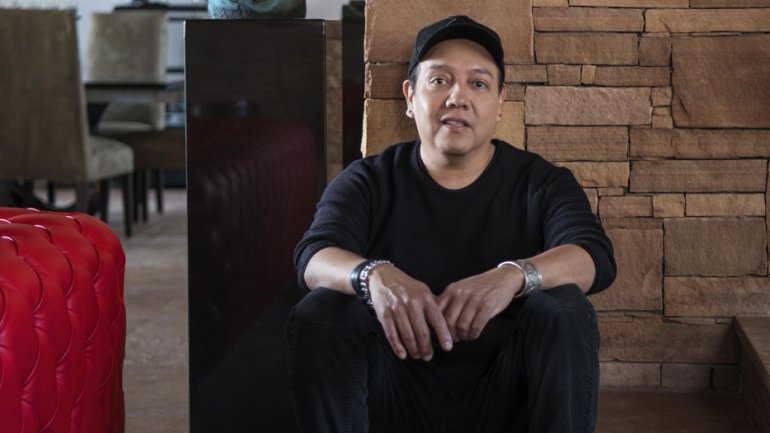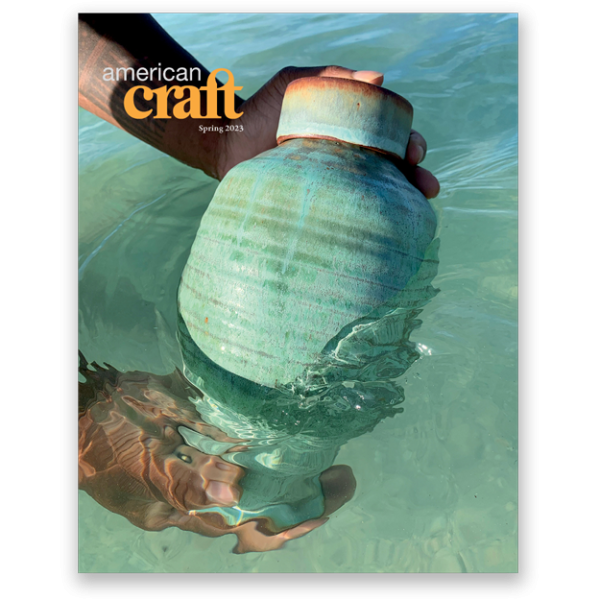The Queue: Virgil Ortiz
Get to know the people featured in the pages of our magazine as they share what's inspiring them right now.
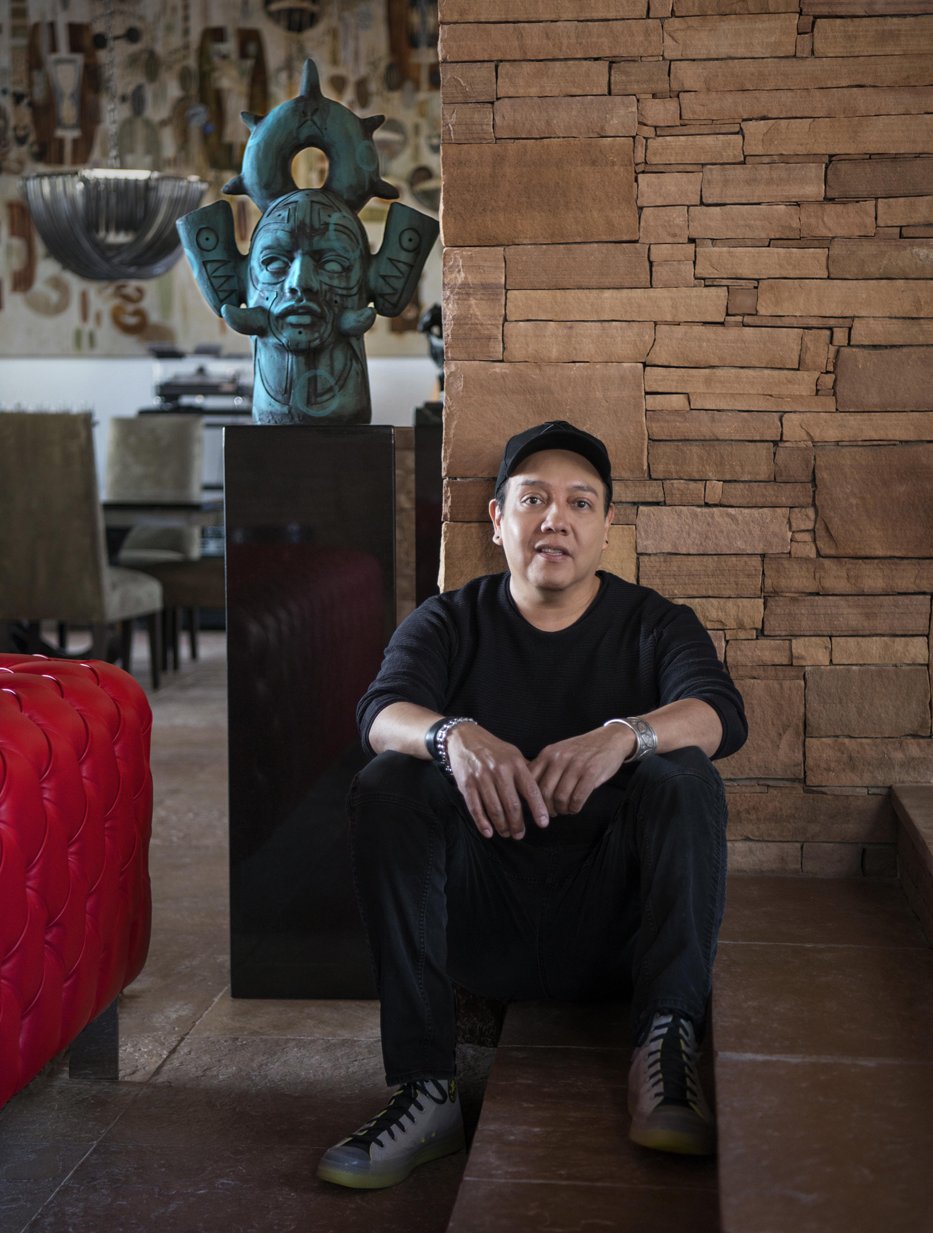
Virgil Ortiz poses next to one of his Recon Watchmen sculptures at the home of collector Dan Crane in Santa Fe, New Mexico. Photo by Ungelbah Davila.
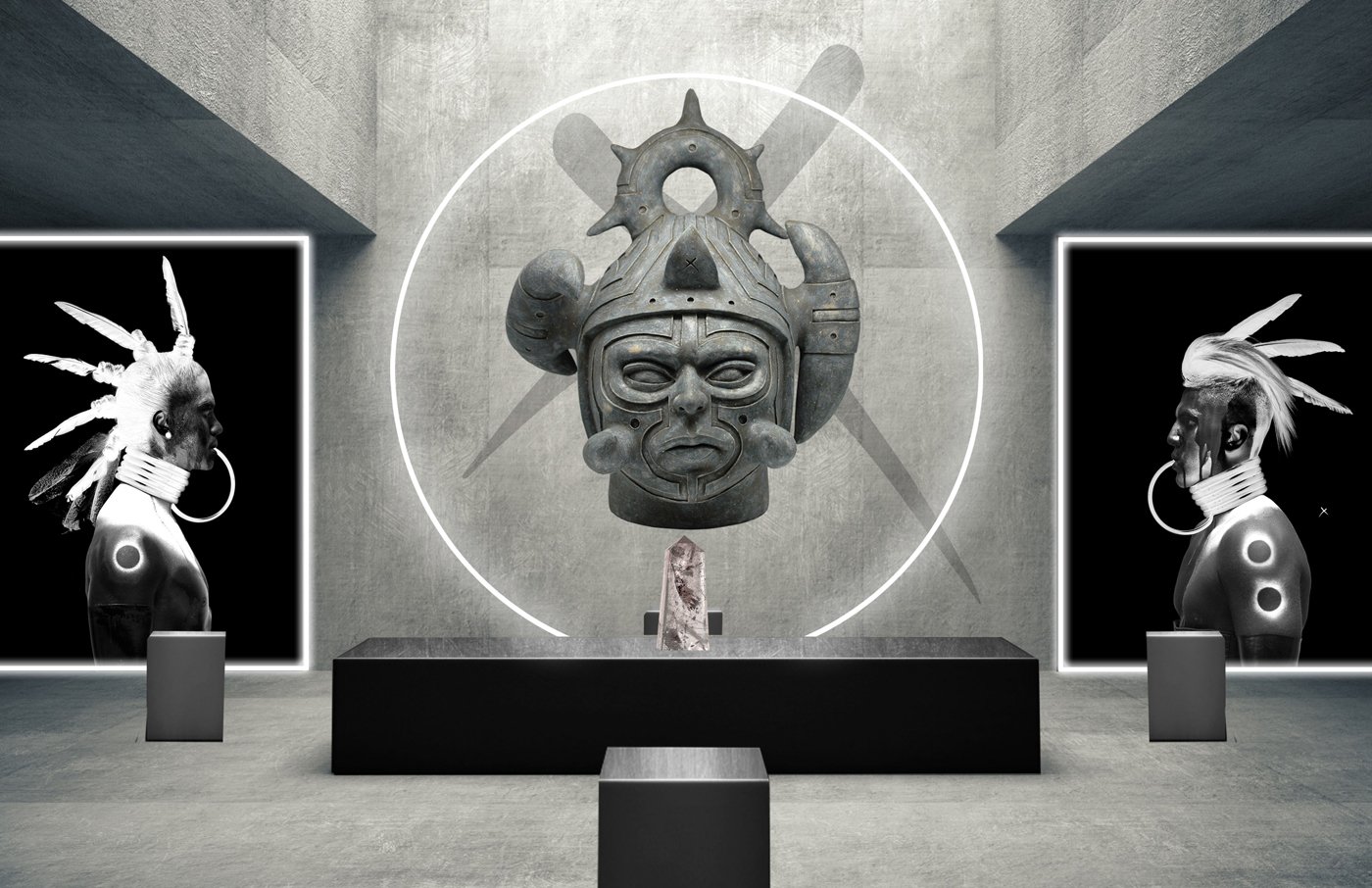
An installation view of Ortiz's upcoming exhibition Revolt 1680/2180: Runners + Gliders at Denver's History Colorado Museum. The exhibition, which incorporates clay, photography, and augmented reality, opens in May 2023. Photo by Virgil Ortiz.
How do you describe your work or practice in 50 words or less?
My work is based on educating people globally about the 1680 Pueblo Revolt, a historical event that has been swept under the carpet, not taught in schools, and omitted in textbooks. It’s an awakening of the truth and education of Pueblo history. I’m reviving social commentary in my traditional clay works and recording a timeline of past and current events.
What are your favorite / go-to tools in your studio?
It depends on what medium of art I am working on that day. Music is an essential element that is constantly bumping, no matter what I do in my studio. If I work on clay, I love using clay tools that my mother handed down to me. For creating garments, the rotary cutter is a must. Digitally, Photoshop is at the top of the list.
If you could have any contemporary craft artist’s work in your home, whose would it be and why?
The gargantuan ceramic works of Cristina Córdova and Juan de Dios immediately come to mind. Their massive creations are not only an inspiration, but the stories they tell through art are critical. I connect with their works because they also use art to educate about their bloodline and where they come from.
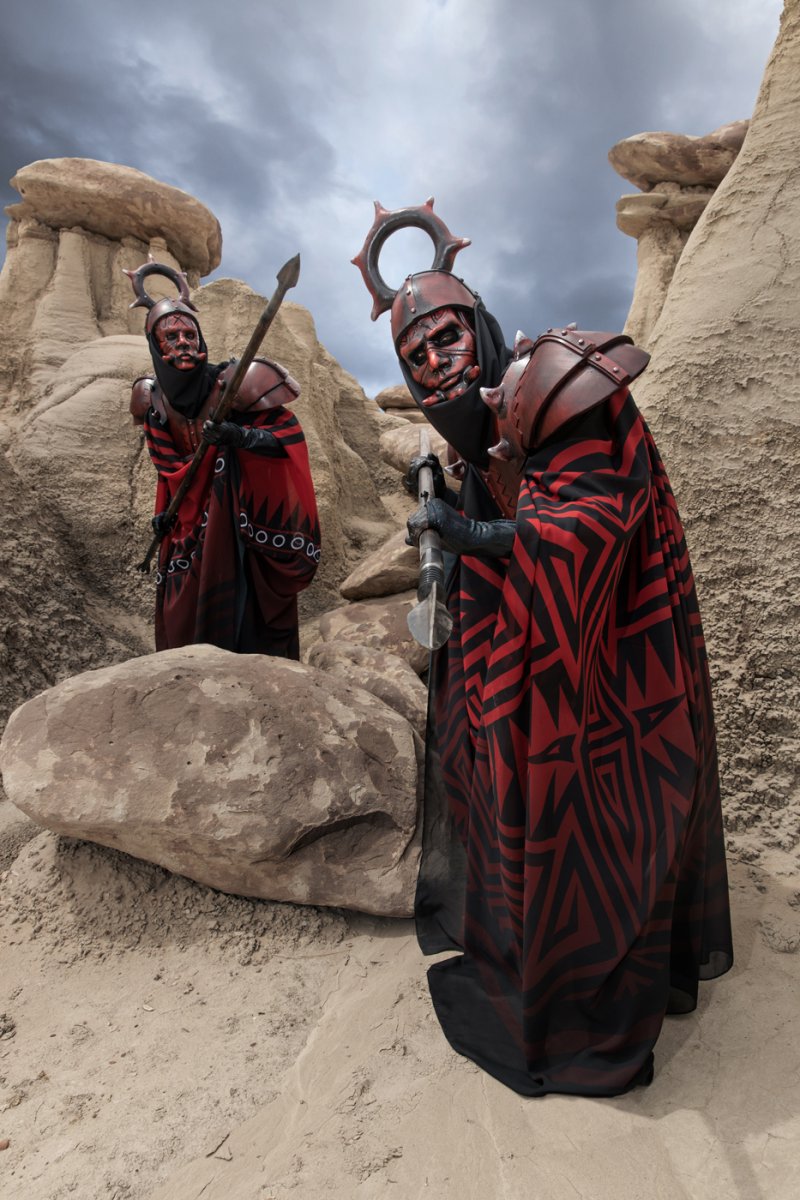
Recon Watchmen are characters in Ortiz’s epic science fiction Revolt 1680/2180 project. Clad in silk costumes designed by Ortiz and silicone, latex, and resin masks, and armed with foam shields and metal and wood weapons, the Recon Watchmen are guardians and protectors of Pueblo culture and tradition. Photo by Kamden Storm.
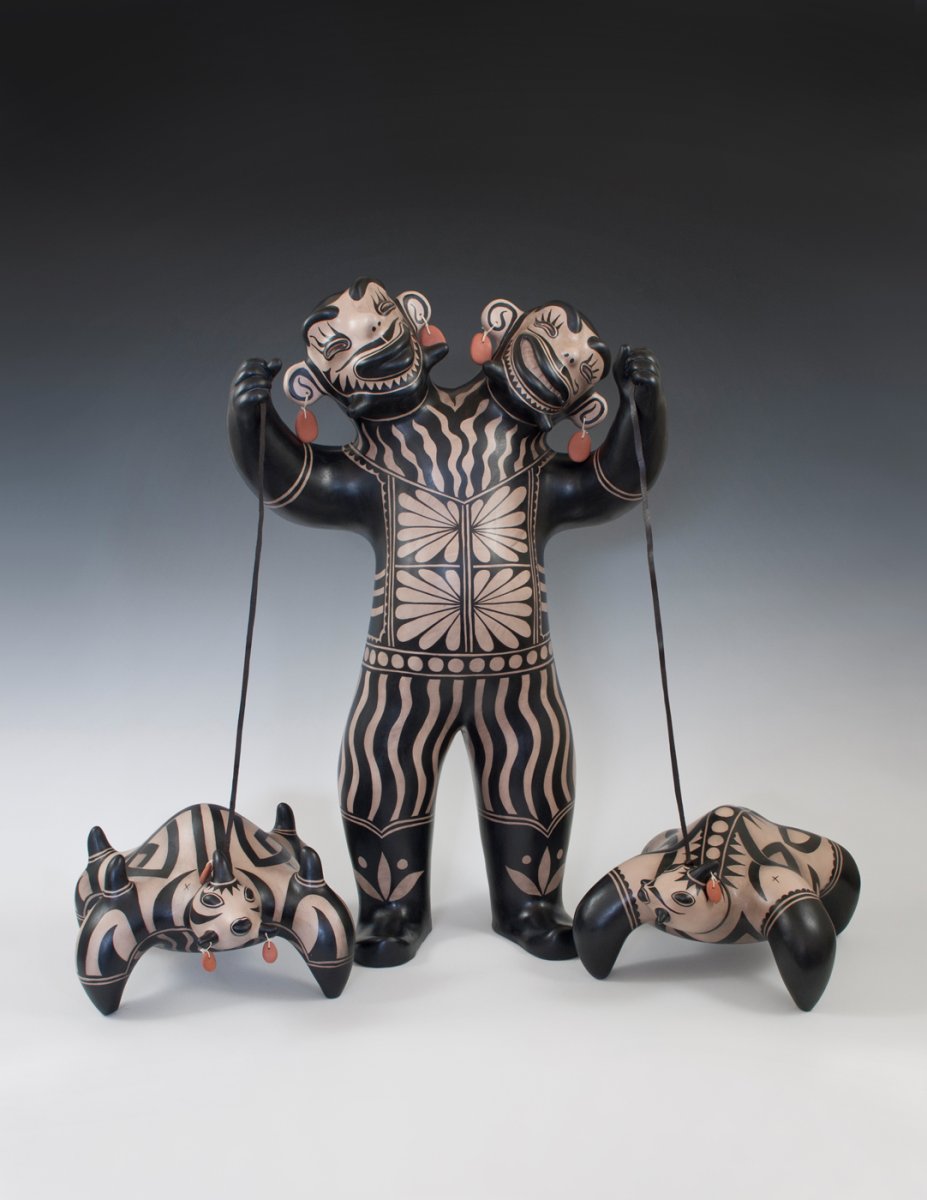
Master & Tics, 2022, Cochiti red clay, white clay slip, red clay slip, black pigment (wild spinach), Master: 29 x 18 x 10 in.; Tic (left): 8 x 5 x 13 in.; Tic (right): 7.5 x 11 x 12 in. In the permanent collection of Fondation Cartier pour I’art contemporain, Paris, France. Photo by Virgil Ortiz.
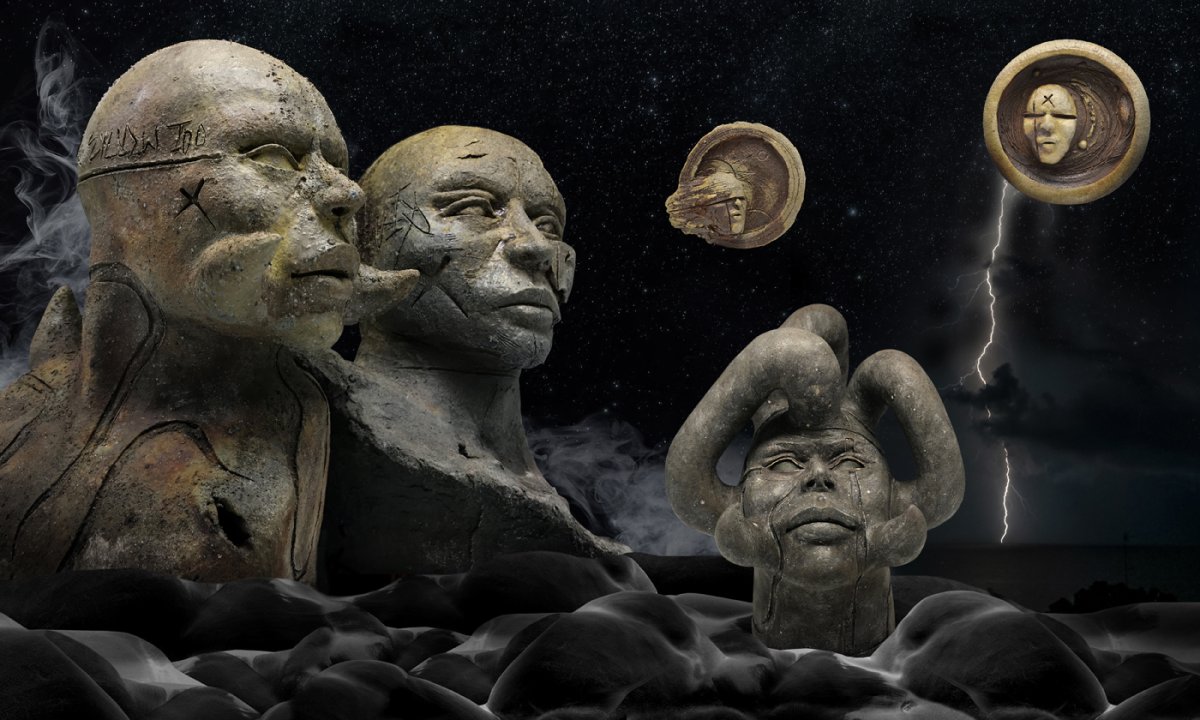
The Revolt Chargers, characters in Ortiz’s Revolt 1680/2180 saga, were created during a residency at the Reitz Ranch Center for Ceramic Arts in 2020. Photo by Virgil Ortiz.
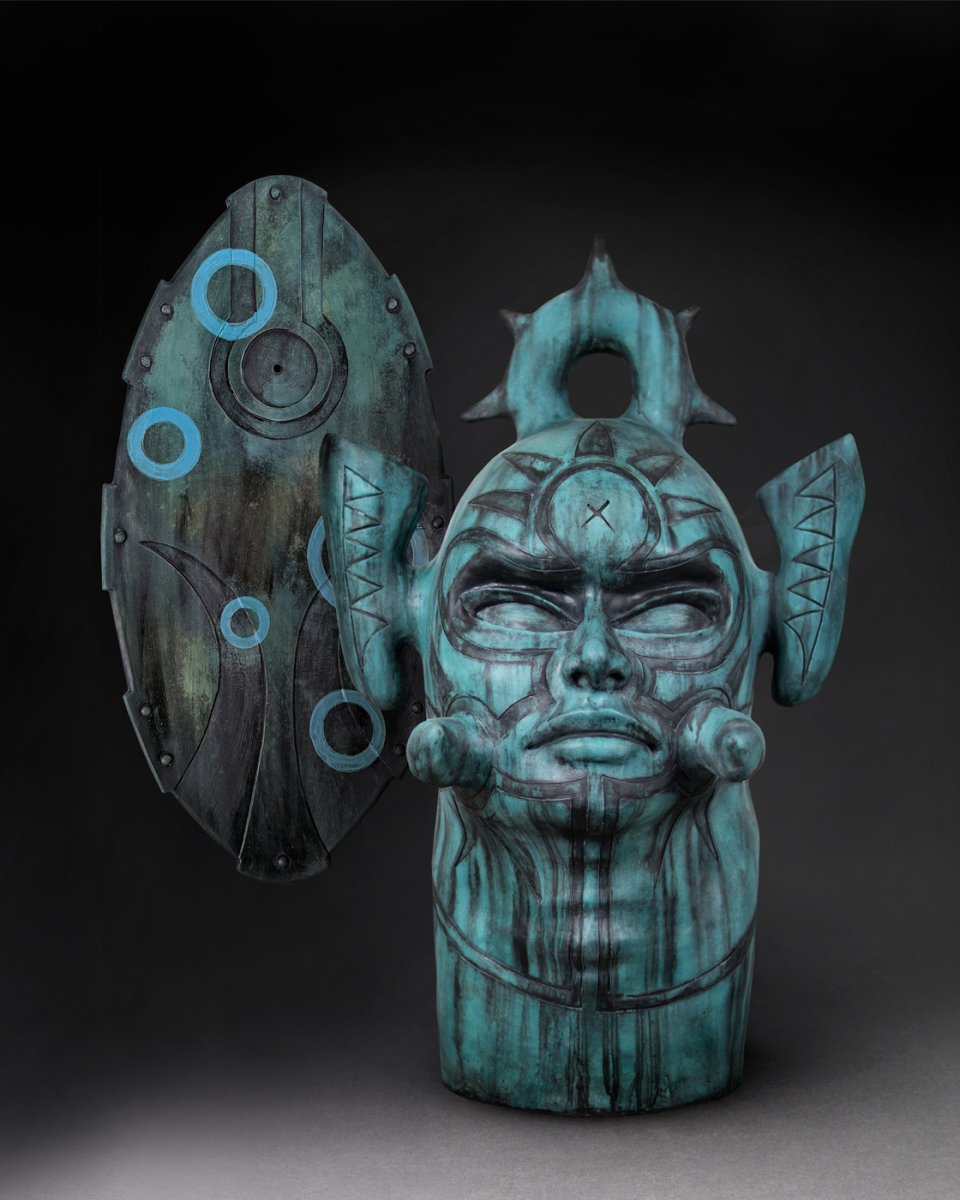
Mitz Nokep, Matriarch of the Recon Watchmen, 2022, high-fire clay and glaze, 42 x 25 x 22 in. Ha'pon (War Shield), 2022, high-fire clay and glaze, 39 x 21 x 5 in. Mitz Nokep, Matriarch of the Recon Watchmen made by Virgil Ortiz at the Archie Bray Foundation for Ceramic Arts, Helena, Montana. Ha'pon (War Shield) designed and made by Simon Levin in Illinois studio. Both works created for the upcoming show Shadow and Light at Vladem Contemporary in Santa Fe, New Mexico, which opens in August 2023. Photo by Virgil Ortiz.
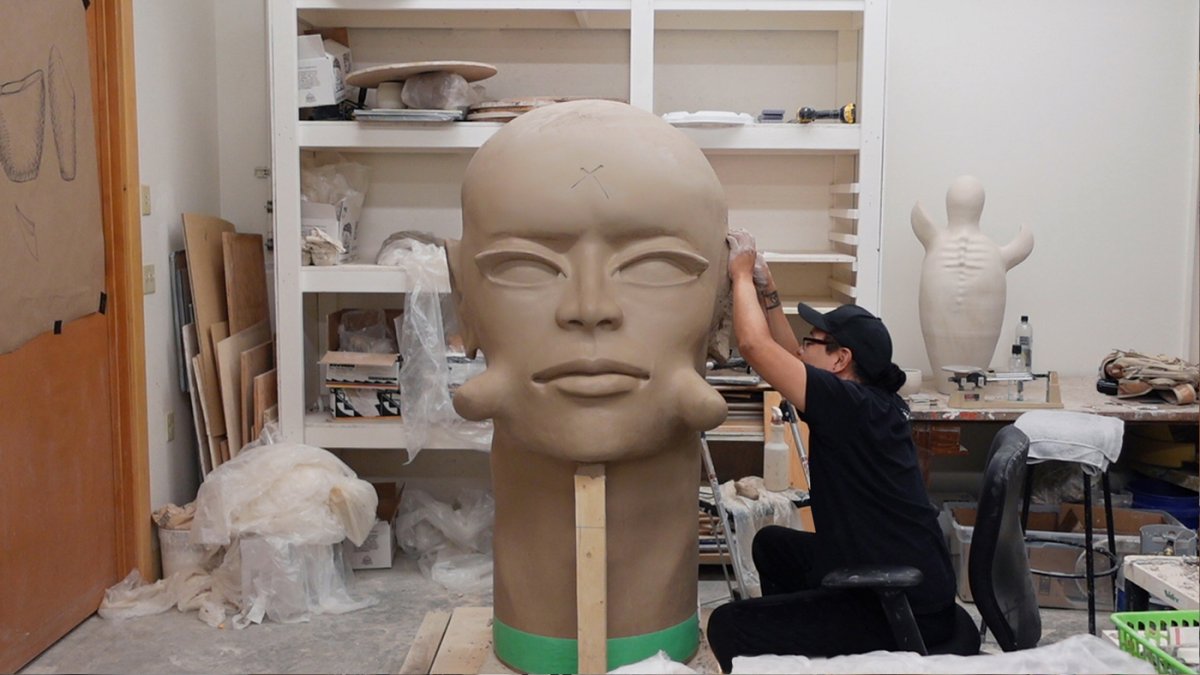
Ortiz in the Archie Bray ceramic studio crafting a large-scale bust, October 2021. Photo by Virgil Oritz.
What are your favorite current sci-fi or fantasy series? Do they include craft?
The film Prometheus from the Alien saga is forever ingrained into my brain. The entire series was created around one of my all-time favorite artists, H. R. Giger. His artwork combines humans and machines; he calls it biomechanical. Perceiving and looking into the future resonates with me—it helps me to reach a demographic of sci-fi fans using art and unexpected imagery.
What do you want people to know about Cochiti pottery?
Our people's clay works are a timeline and recording of our history. We are still utilizing age-old methods and materials handed down to us. It connects me to our ancestors and provides therapy, prayer, and teachings. I want Cochiti clay works to inspire humankind to acknowledge our history, which has been on the verge of being erased. It’s a reminder of all the atrocities that our people have faced and survived and of the strength not to let it happen again.
Which artists, craft exhibitions, or projects do you think the world should know about, and why?
I recently had the opportunity to view and experience the work of photographer and human rights activist Claudia Andujar at her show The Yanomami Struggle in New York City. For over five decades, she has devoted her life to photographing and protecting the Yanomami, one of Brazil's largest Indigenous groups. This exhibition speaks directly to me because of the similarities between the colonization and genocide that happened to our Pueblo people and what is currently happening to the Yanomami. Alongside her work, a selection of Yanomami drawings are also featured, depicting their own perception of nature and the universe—a must-see.
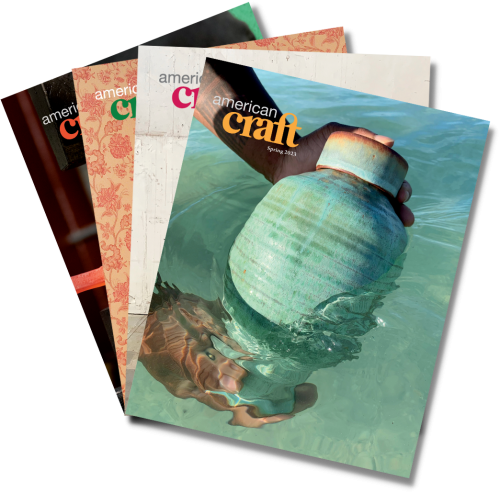
Discover More Inspiring Artists in Our Magazine
Become a member to get a subscription to American Craft magazine and experience the work of artists who are defining the craft movement today.


